Interior designing, its purpose being to create space and openness within an interior setting, can very easily, in the instance of a large living room, turn the most minuscule of spaces into one of openness and hospitality where there is a good balance of functionality and beauty. In this manual, you will witness designers positioning the furniture to highlight the space while maximizing light and flow, comfort, and of course style.
1. Establish a Central Focal Point
The initial step toward an effective furniture arrangement within a room is discovering the focal point. A focal point may be a working fireplace, a big picture window, or a piece of artwork that assigns a discreet activation of the room with an indication of some sort for the arrangement of chairs, sofas, and tables in a room of space.
Design Tip: Position your seating group so that it is facing the focal point, creating an obvious area of conversation in the room, which will naturally draw the eye to the seating, without seeming contrived or crowded.

2. Embrace Open Layouts with Defined Functional Zones
Space is about “breathing room/daylight/on display.” Designers will utilize spaces with an open layout approach to define different functional areas (e.g. resting, reading, working), but will also design for flow/infusion of different uses. This works, and can work quite effectively, within an open concept furniture layout that supports and enhances the usability of the clerical programmed seating areas as well!
Design Note: Use furniture groupings and area rugs to define distinct places, and keep open areas free of transitions/obstacles to move through. Don’t push furniture/mirrors against walls. (“Float”, to enhance distance and freedom of movement).
3. Choose Sleek, Proportional Furniture
Things get cluttered and the space shrinks with heavy or oversized pieces. Designers will select, for the most part, lightweight, clean-lined, unobtrusive, multi-purpose furniture. Typically, for larger spaces the simplest furniture arrangement will utilize slender sofas with low backs and “tapered legs”.
Design Note: Sofas with low or lowered backs and taper legged bases create a lower visual weight. Storage ottomans or nesting/collapsible tables minimize visual clutter.
4. Use Symmetry and Balance for Visual Harmony
Use Symmetry and Balance to Develop Visual Cohesion When furniture is arranged symmetrically it presents balance and order which creates a feeling of everything being planned and the space is larger. This is the cardinal rule of arranging furniture for large living rooms to develop visual cohesion and flow.
Design Tip: You may create symmetry with matching arm chairs across a sofa/two sofas facing each other. Balance large pieces with a tall vertical, such as a tall bookcase or a standing lamp, to lift your eye.
5. Maximize Natural and Layered Lighting
Light greatly influences how space is perceived. Natural light maximizes the opening and layered artificial light maximizes warmth and functionality. This is a must to gain a light and airy feel.
Design Tip: Softening window light with sheers, placing mirrors opposite light sources to bounce lighting around the room, and layering ambient, task and accent light to give depth is the aim.
6. Strategic Use of Rugs to Define Without Dividing
Smart Use of Rugs to define without cutting off Rugs anchor furniture groupings and add texture, but should also be carefully selected to retain the flow of the space. Using the right rug sizes correctly will matter most in an open plan home, or any room planning concept.
Design Tip: Use bigger rugs for main seating areas and smaller rugs for second spaces so that some floor exposure is retained to keep the space open.
7. Floating Furniture Creates Dimension and Flow
Instead of lining all pieces along the wall, floating key furniture pieces inward establishes a conversational area and movement paths through the space. This method is an important component of how to design furniture for airy rooms.
Design Tip: Position sitting lounges, chairs, and other pieces away from walls to encourage gathering and to create some room illusion.
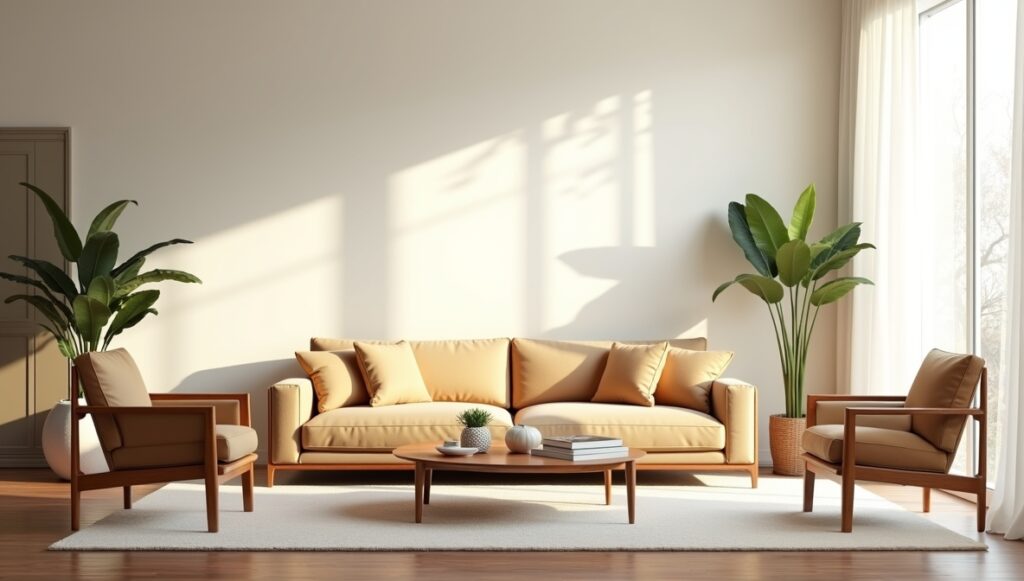
8. Utilize Vertical Space to Draw the Eye Up
High ceilings and vertical elements appear to enlarge and draw the awareness and focus upwards. Using vertical space is a deliberate space creating tip from these spacious interior design tips.
Design Tip: Install your window treatment at or above the ceiling line, position tall bookcases or vertical art, and utilize hanging plants near the skirts of the windows.
9. Light and Neutral Color Palettes to Amplify Space
The right palette visually expands a room. Whites, creams, soft grays, and pastels reflect light and create a calm backdrop in a modern airy living room idea.
Design Tip: Introduce color through cushions, throws, or art to add personality without compromising airiness.
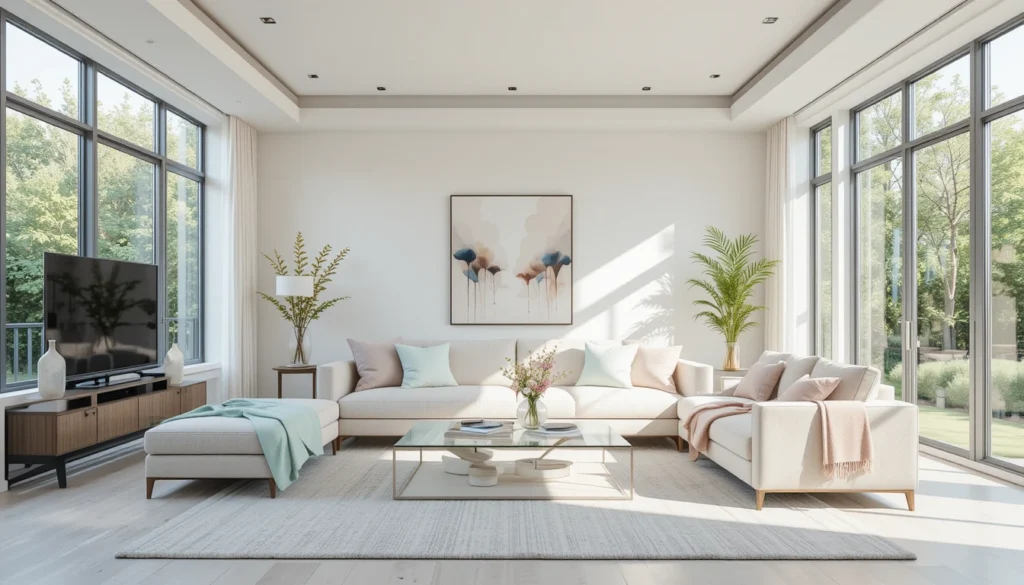
10. Minimalist but Functional Decor
Airy spaces eliminate clutter. Designers restrict identifiable accessories and choose furniture with built-in storage. This dictates a minimal furniture arrangement principle.
Design Tip: Let every décor item be a statement piece, and ensure everything is functional or ornamental. Open shelving should feel airy, with only basic items on display.
Popular Furniture Arrangements to Inspire Spacious Living Rooms
- Sofa And Two Chairs Across From sofa: This is the classic and conversation-friendly way to begin, essential for furniture layouts for open living rooms.
- Two Chairs Angled Across From Sofa: This adds flow falling into a conversation
- Two Sofas Directly Facing One Another: This is formal, symmetrical, the largest layout.
- U-shaped furniture: generates flow and is the preferred furniture system to entertain, open floor plan living room, with larger groups.
Conclusion:
Designing spacious airy rooms is be a mental and physical process the placement of furniture, lighting and décor are key areas to consider. Making function, lighting, and furniture balance primary design elements allows for more natural light, and furniture flow, and has an airy effect of spacious minimal design, which adds comfort and sophistication to a living space. I believe if you implement these best practices from an interior design standpoint, and naturally add relevant keywords, would assist in achieving airy, open, and inviting living spaces.

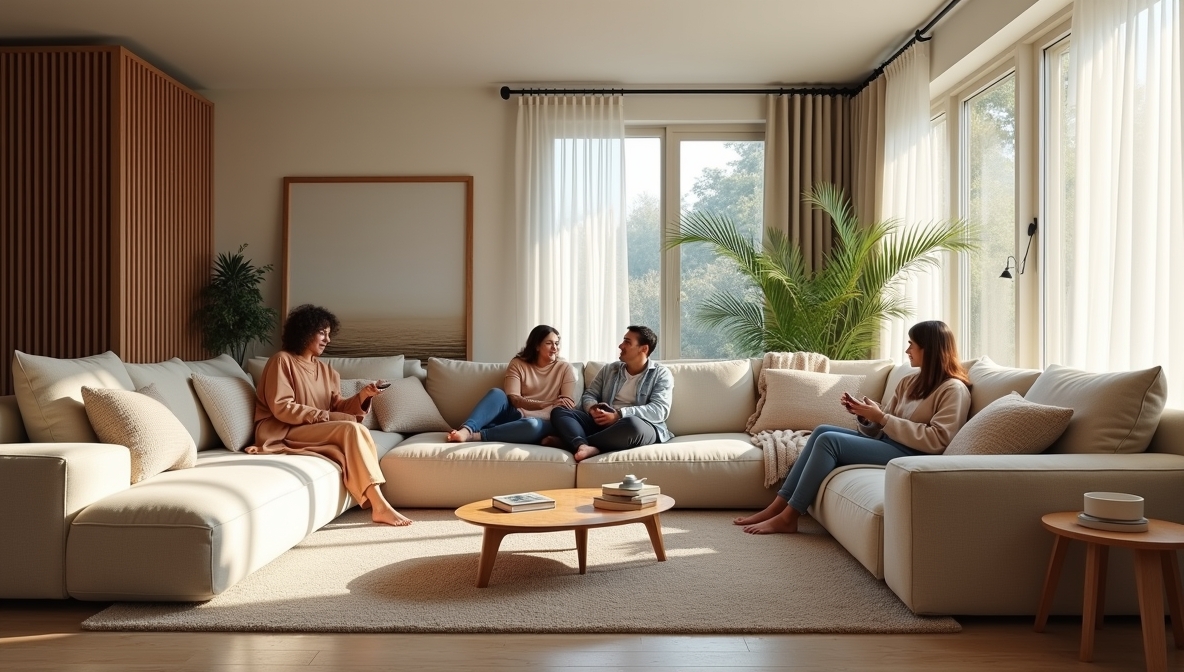
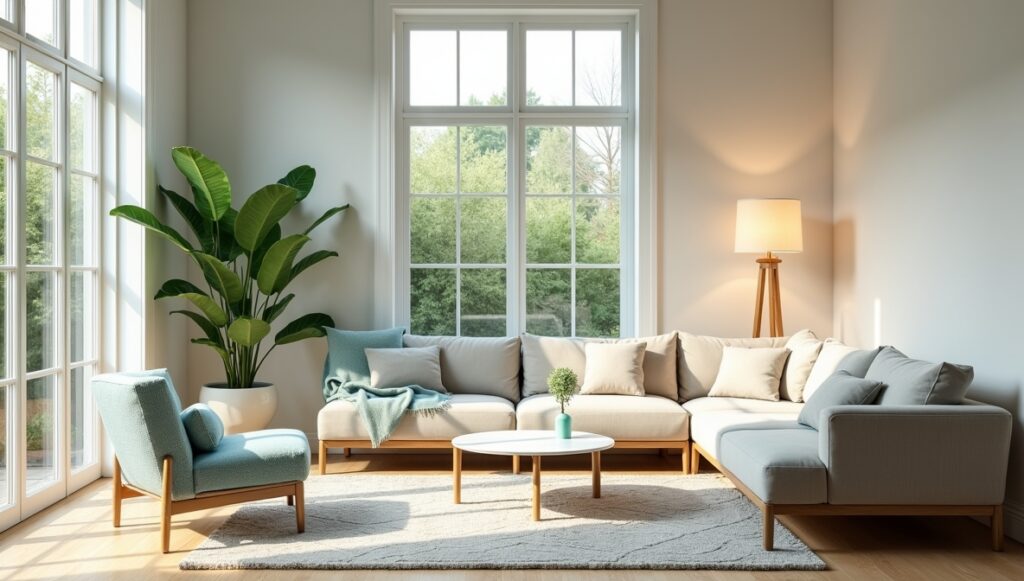
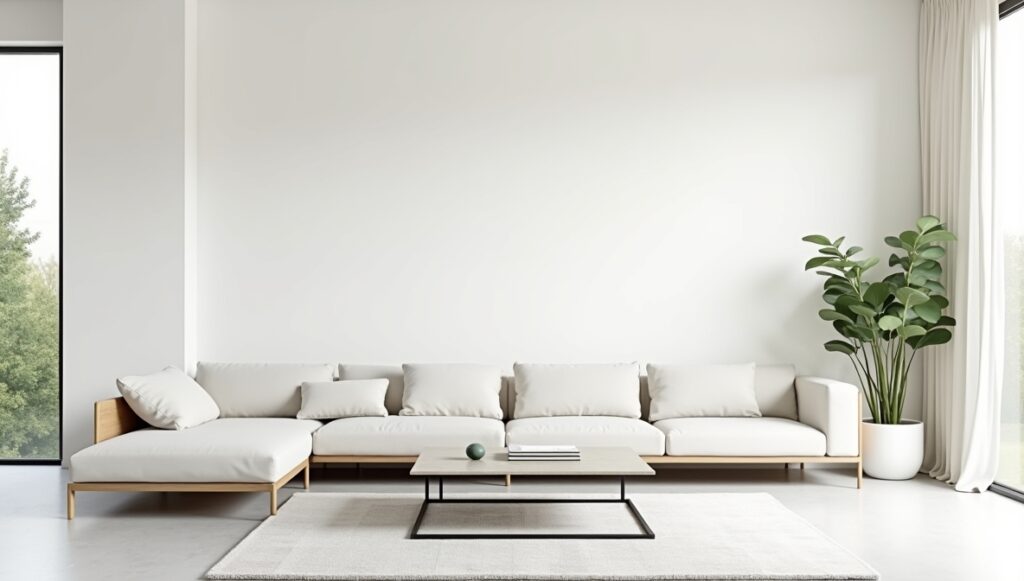
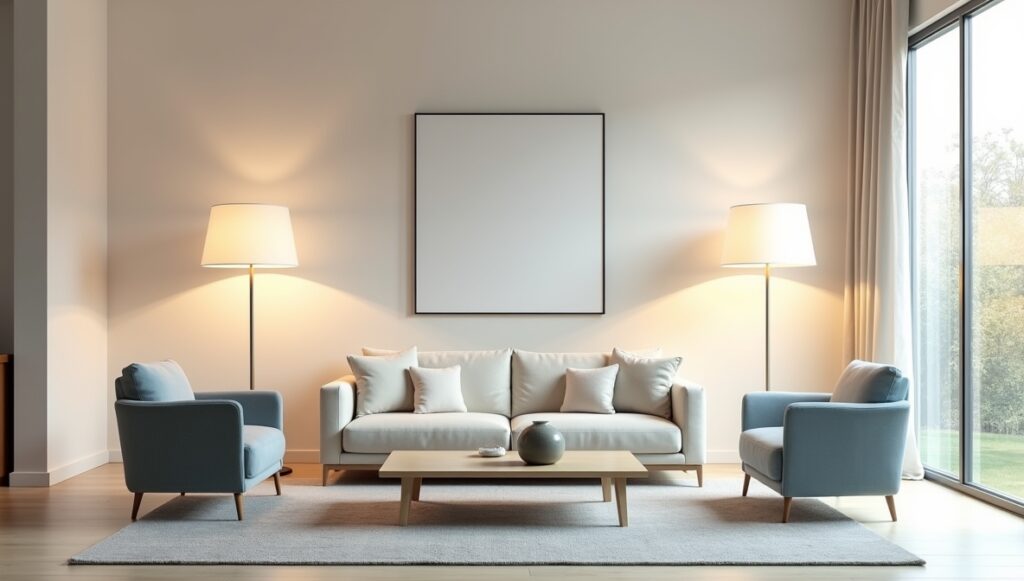
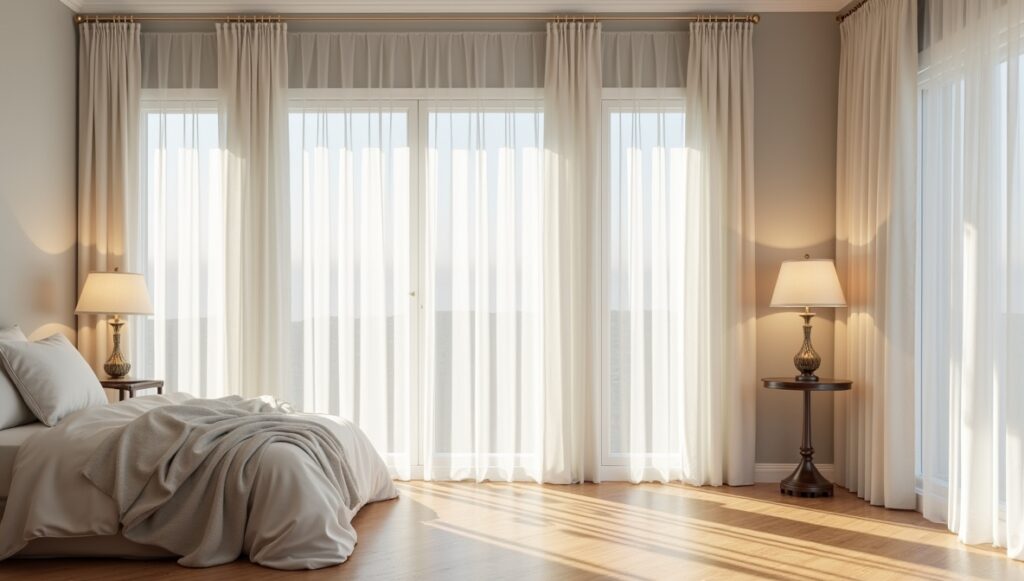
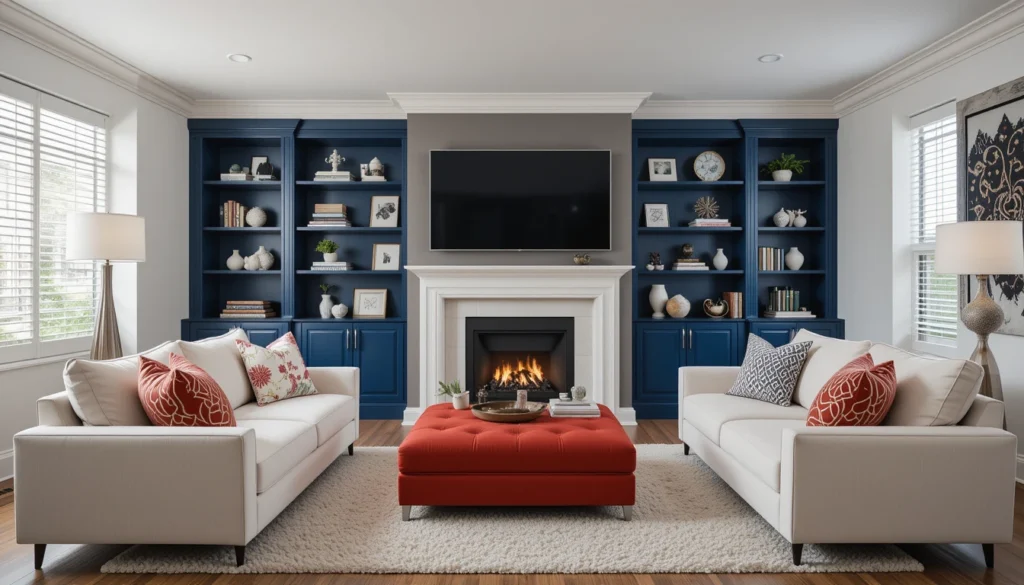

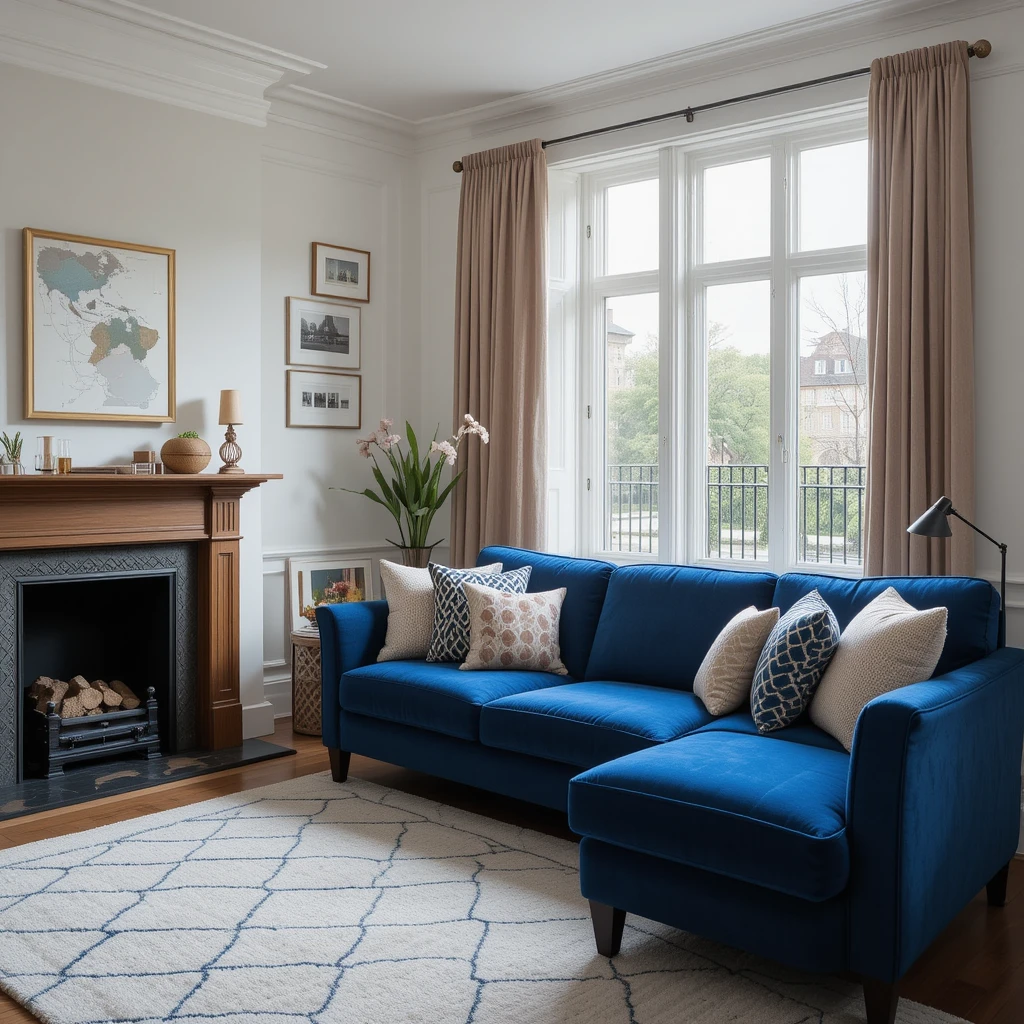
Leave a Reply